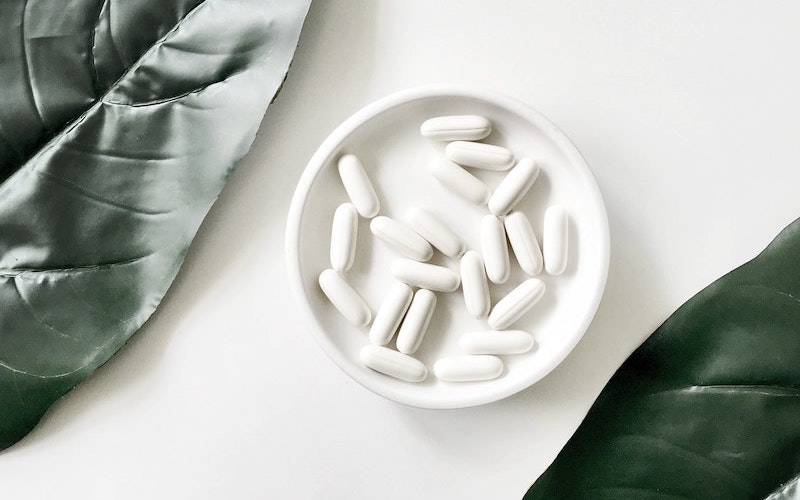Omega-3, Vitamin K, and Other Overlooked Nutrients
Episode #7 of the course Hack your diet: Using nutrition science to live healthier, longer, and diet-free by John Robin
Welcome to our seventh diet hack!
Yesterday, we busted the fallacy that meat and dairy are bad for you and instead, learned to look at why they’re important. This opened up a small gateway that we’ll be entering fully today: nutrients and vitamins and how to make sure you’re getting enough of them.
Vitamin C, D, and Calcium: The Trifecta of Health Superpower
Yesterday, we talked about the importance of calcium when discussing why dairy is important. You can get calcium elsewhere, though likely not enough, so you must supplement, and if you do, there are two other nutrients you should take with it to get the best absorption:
• vitamin C
• vitamin D
If you eat many vegetables, you’ll get lots of vitamin C. All the staple vegetables I listed, in fact, are a selection I’ve honed through years of practice to be high in several nutrients, particularly C.
But you can’t get too much vitamin C, and especially given its importance in our immune system [1], you’re best to always be way over the recommended amount. I eat an orange every day, which is a vitamin C boost. I also take 500mg in pill form. I do this when I take my calcium, and here’s why: Vitamin C enhances calcium absorption in the intestine [2], helping you take in more calcium, both in food and especially in your larger supplement dose.
Similarly, vitamin D helps you absorb more calcium [3]. It also helps you keep your bones strong.
Unless you’re in the sun all day long or eating lots of salmon, you won’t get enough vitamin D, so it’s best to take a daily supplement of this (1000 IU is a good baseline—IU is short for International Units, the unit vitamin D is measured in). Or, if you can stomach 1 tbsp of cod liver oil, that has 1360 IU.
Because of how vitamin D and vitamin C work together with calcium, these are three supplements you want to take together daily to unlock their power.
Vitamin K: A Complement for the Trifecta
There’s another often-overlooked vitamin that’s critical: vitamin K.
Vitamin K helps with blood clotting and bone metabolism. It also keeps calcium levels in the blood low. This is critical for reducing calcification of arteries, a part of arterial hardening that leads to heart attack and stroke. Adequate K consumption ensures that calcium gained through our trifecta of C, D, and calcium goes to the bones where it’s needed.
There are two forms of K:
• K1
• K2
Several studies have found that K2 is better for calcium regulation [4], but the benefits of vitamin K can be found by consuming both.
K1, called phylloquinone, is found in plants like kale, spinach, broccoli, and other dark green leafy vegetables (called cruciferous vegetables [5], which comes from the Latin “cross bearing,” since they all have four leaves that resemble a cross). This is often called the “plant form” of vitamin K, and it’s easy to get a lot of it [6]. This is why I have Brussels sprouts, kale, spinach, and broccoli on my list of staple vegetables.
K2, called menaquinone, is thought to be better absorbed and may stay longer in the body. It is found in these common foods:
• egg yolks
• cheese (especially gouda cheese made in the Netherlands [7])
• goose liver
The absolute best source: a traditional Japanese dish called natto, made from fermented soybeans. It’s slimy, sticky, and stringy and has a pungent smell. You can read more about it at the end of the lesson [8].
Omega 3, an Often-Overlooked Nutrient
Like K, there are two forms of omega-3:
• short-tailed
• long-tailed
The short-tailed form of omega-3 is called ALA, which stands for alpha-linolenic acid. If you have 1 tbsp of ground flax a day, you’ll get more than enough, but it’s the long-tailed form that gives you the health benefits:
• improved mood (good for mood disorders)
• reduced triglycerides (especially important to reduce artery disease)
You get enough of this if you eat salmon. If you don’t, take a daily supplement. They’re common and easy to find. I use Webber Naturals Triple Strength.
Action: Get Your Supplement Regimen Together!
Whew! We covered so much today, but what an important unit! Your action is simple: Start your supplement regimen. Put it on the grocery list!
Tomorrow, we’ll talk about how to deal with bad eating spells, now that we have the foundation laid for what healthy eating looks like. Stay tuned!
Recommended book
How Not to Die by Michael Greger, M.D and Gene Stone
References
[2] Effect of Vitamin C and Carotene on the Absorption of Calcium in the Intestine
[4] Vitamin K1 and K2: What’s the Difference?
[5] Beginner’s Guide to Cruciferous Vegetables
[6] 20 Foods That Are High In Vitamin K
[7] Foods That Contain Vitamin K
[8] Why Natto Is Super Healthy and Nutritious
Share with friends

